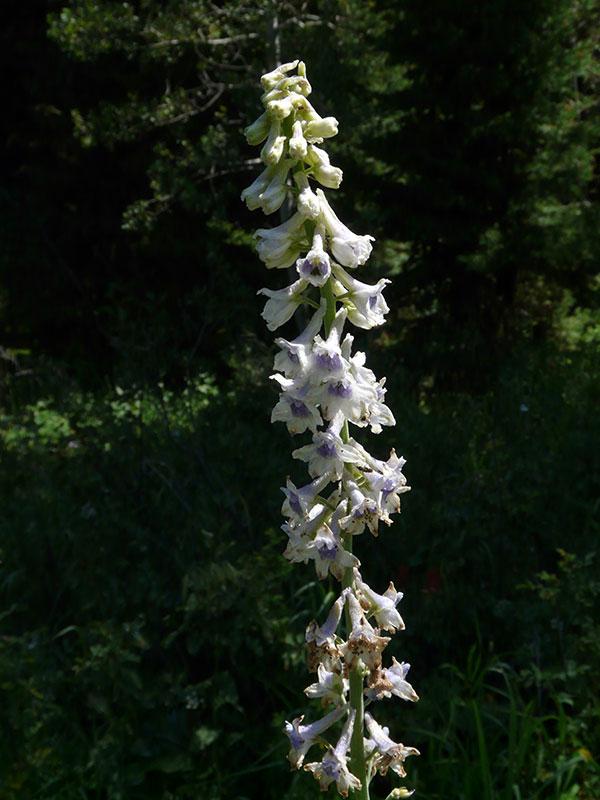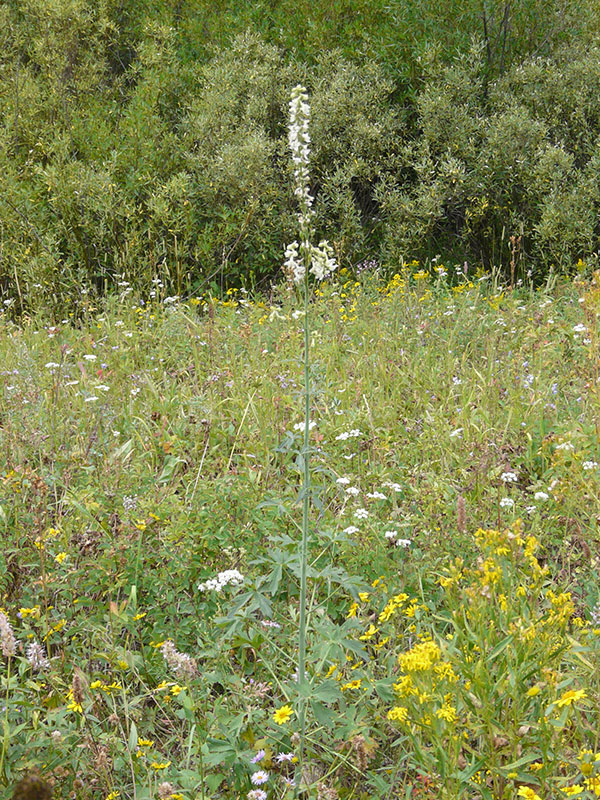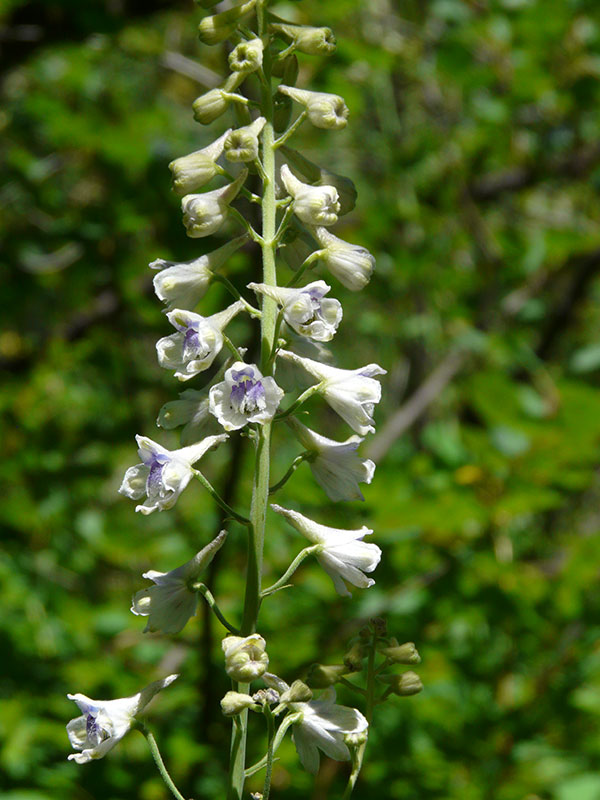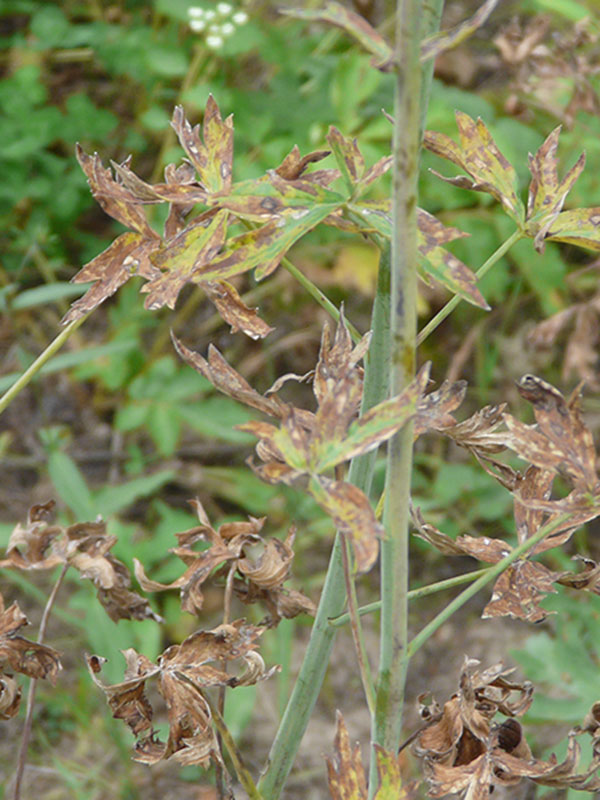Delphinium x occidentale / tall larkspur
- white with blue center, long white spur (tail) out the back
- flowers on tall racemes, up to 6 feet – more than 50 per stalk
- highly divided/lobed leaves
- flowers look a lot like garden larkspurs
Also known as: western larkspur, dunce cap larkspur
Walking up Teton Canyon or Mahogany Creek, it is a real joy to suddenly see a bunch of tall, blue monkshood in full bloom. And then, not really as an afterthought but as an additional surprise, to see a bunch of tall white/blue-ish flowers in the same area… the tall or western larkspurs. Although these come in a variety of colors, in the Valley the ones I have seen most are pretty much white with a purple center. They stand out because they can be more than 6 feet tall with more than 50 flowers on a stalk. The flowers also stand out for their weird, larkspur-like morphology, especially the spur (or tail) that sticks out behind. As might be expected with a flower like this, D. x occidentale is pollinated by a number of bees and by hummingbirds as well as by moths.
Western larkspur is a long-lived (75 years) perennial herb with deep woody roots and hollow stems. The leaves are cleft to the base into 3 main lobes, and divided again into 2 main segments. All 5 segments wedge-shaped, irregularly cleft or lobed or toothed. One of the gallery photos shows them well in their green state, and another as they senesce.
Sometimes listed as D. occidentale, apparently the current accepted name is D. x occidentale, with the idea that it is a hybrid of subalpine larkspur (D. barbeyi) and Sierra larkspur (D. glaucum). D. glaucum is also reported in Idaho. It is found in a variety of habitats, including in open coniferous forests and aspen, sagebrush, mountain brush, and meadow. All of these, of course, are well known in the Valley. Most of the time, it’s found on moist to wet sites, often in areas of late snowmelt. It flowers in July and August and the seeds mature from August to September.
Interestingly, whether tall larkspurs are poisonous or edible to livestock and wildlife seems to be a matter of confusion. The US Forest Service, for example, says – based on quite a few scientific publications – they are highly poisonous, but at the same time, that they are “palatable to both cattle and sheep, although sheep can tolerate about four times more western larkspur in their diet than cattle. Western larkspur-dominated tall forb communities on high mountain ranges are often considered good sheep foraging areas.” The Utah State University Extension Service goes so far as to say it is good forage for sheep and wildlife, and OK for cattle (although it is poisonous to cattle until after blooming). Odd. It may also be effective as a control for head lice. While you wonder about this, don’t eat them, and don’t let you horse eat them either.
| Color | |
|---|---|
| Family | |
| Blossom size | |
| Inflorescence size | |
| Inflorescence type | |
| When? | |
| Where? |






